What is Lemon Zest?
Lemon zest is a recipe ingredient that consists of the colorful, yellow outer layer of the fruit and is obtained by scraping or cutting the top of the lemon with a sharp utensil. It is full of lemon flavor and adds a burst of freshness to your favorite lemon recipes.
Unlike lemon juice, the zest contains essential oils, more flavor, and is not nearly as acidic or tart.
When zesting lemons, limes, or oranges, you want to make sure and only remove the brightly colored flesh of the peel. Avoid the white part, or pith, directly underneath the peel as this is quite bitter.
Table of Contents
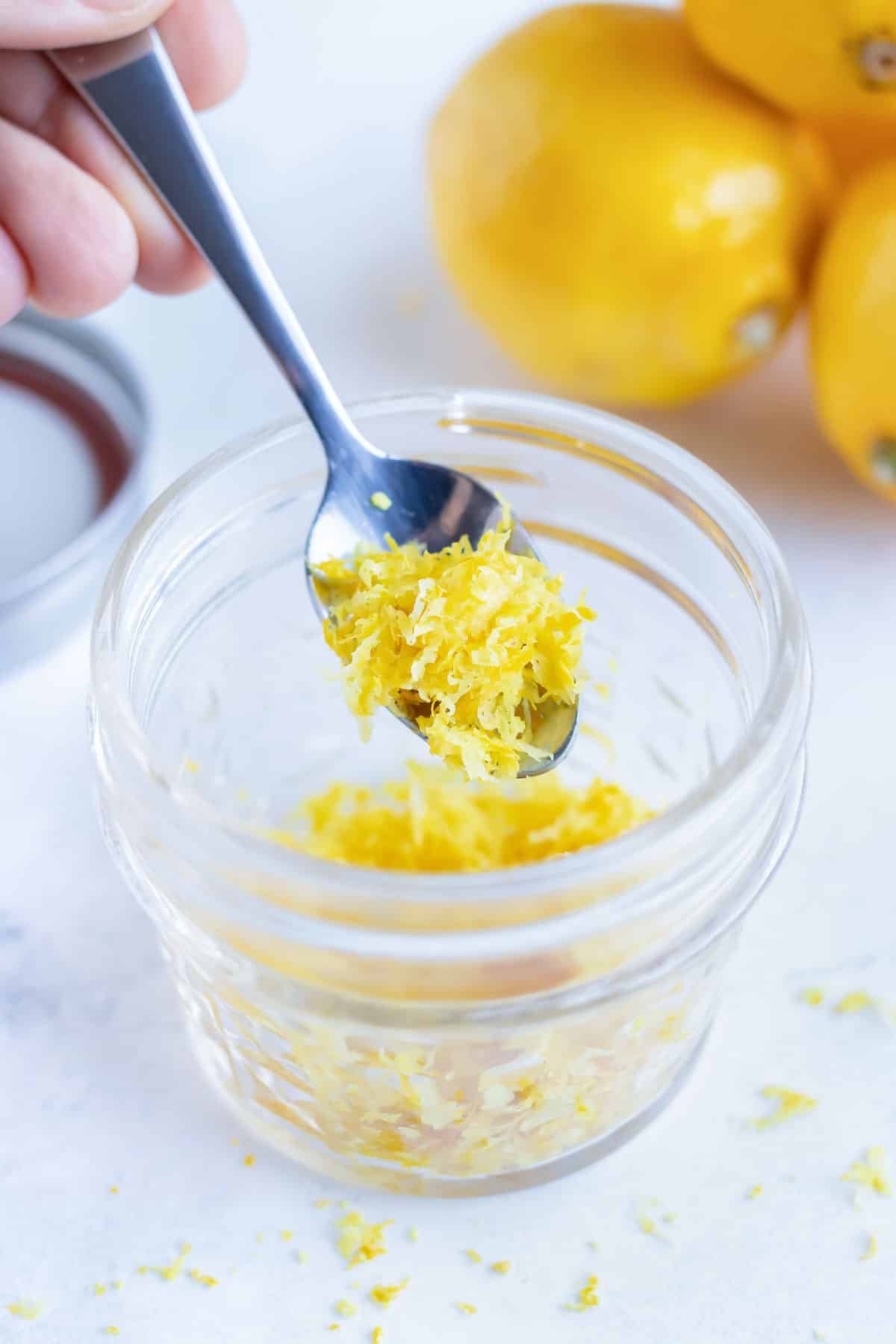
How to Zest a Lemon (5 Easy Ways)
The two most common methods for zesting a lemon is to use either a microplane or a citrus zester. These are the quickest and best ways, but do require an extra kitchen gadget.
If you do not have a citrus zester laying around, there are a few other ways you can still get this flavorful ingredients, and I’ll go over those below.
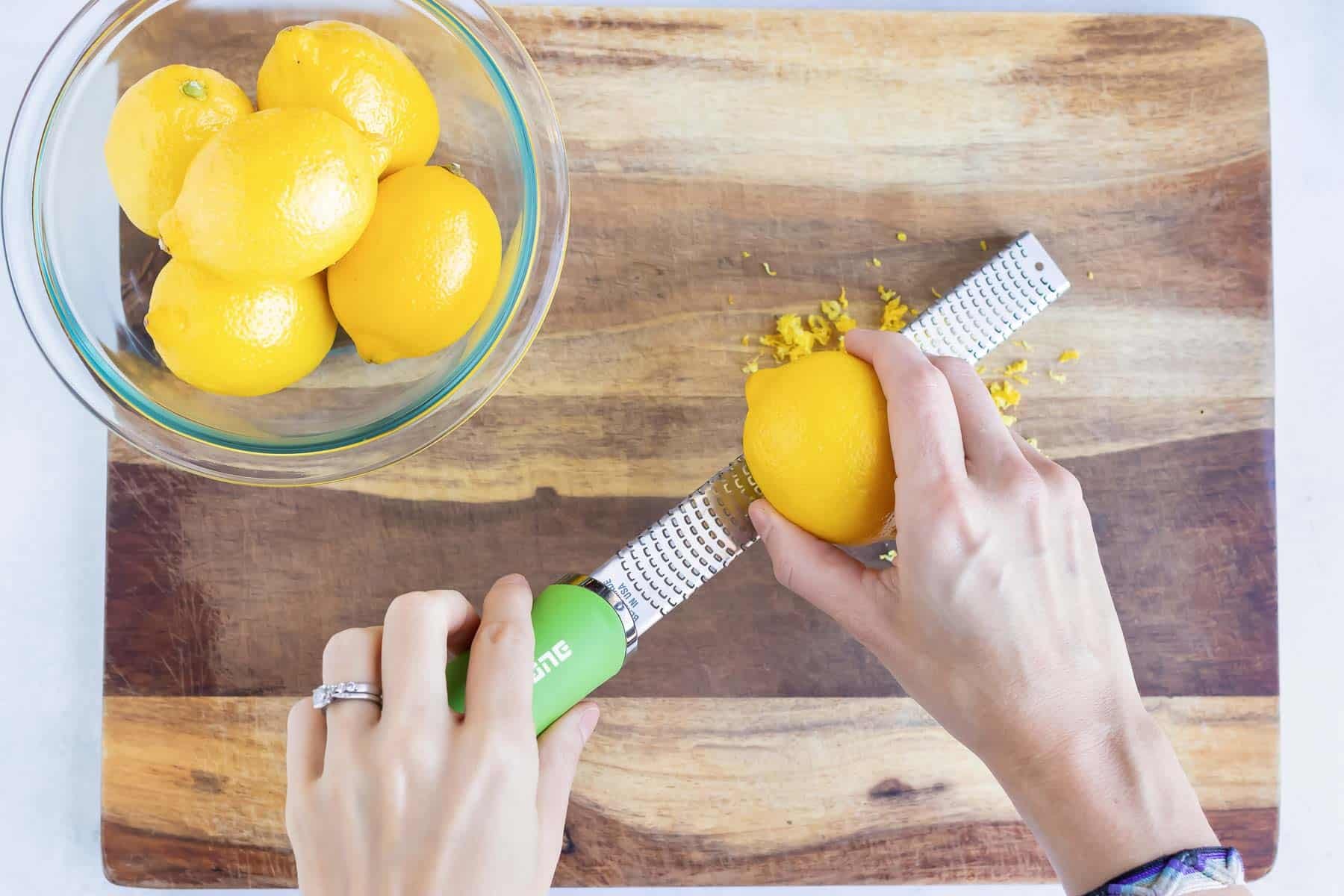
1. Microplane
I think using a microplane is the best way, and also the easiest way, when you want finely grated lemon zest.
A microplane grater is a specific kitchen tool that is used to remove the brightly colored flesh from citrus without cutting too far into the pith.
How to Zest Lemons with a Microplane:
- Hold the lemon in one hand and the microplane in the other.
- Move the lemon back and forth over the grates of the microplane, rotating as you go. Pay close attention to the placement of your fingers. (A microplane has very sharp edges and can easily cut you!)
- Continue zesting the lemon until the yellow peel is removed.
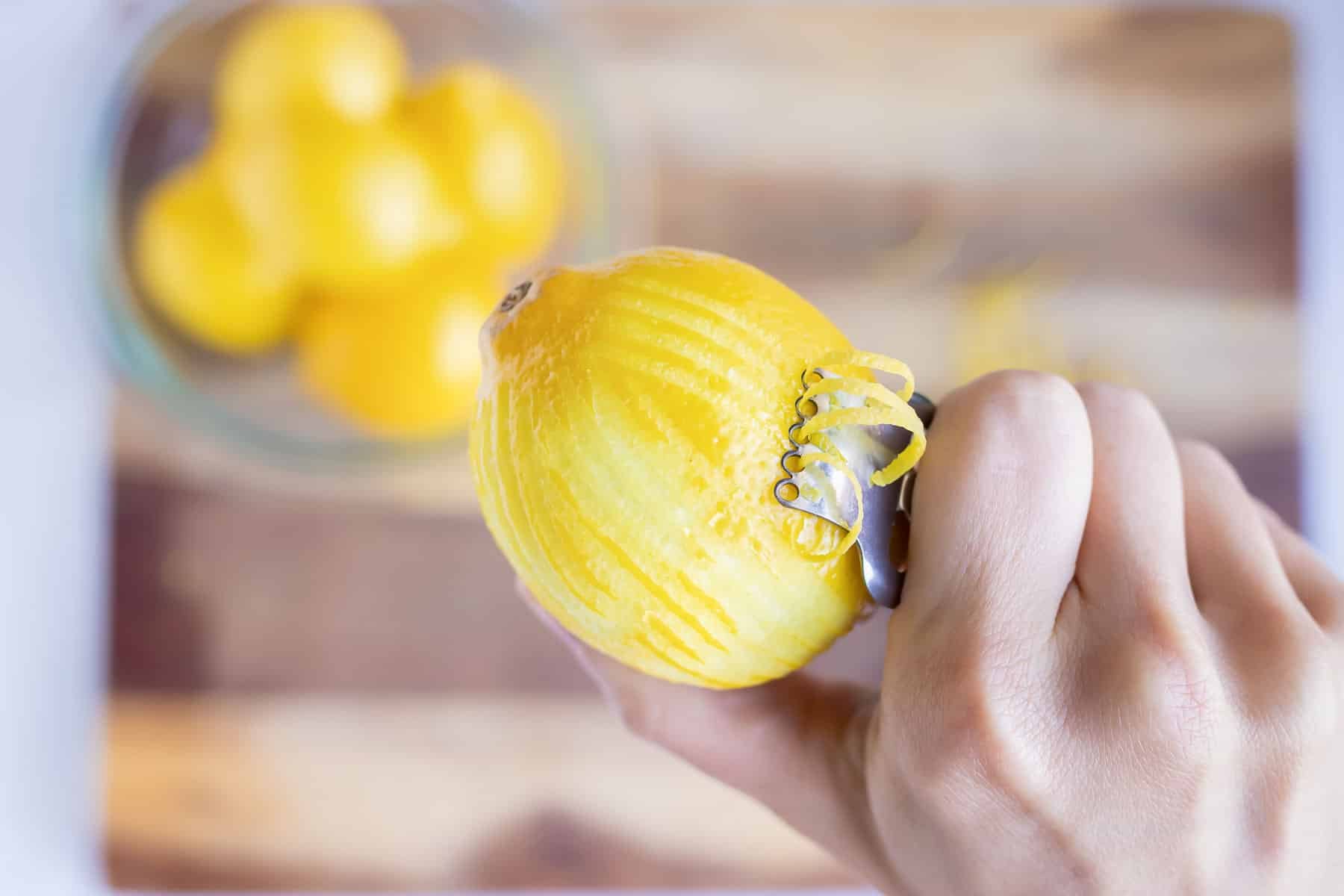
2. Citrus Zester
The next method for zesting lemons is to use a citrus or lemon zester. Using this tool will give you longer strands of peel versus the smaller pieces produced by a microplane.
How to Zest Lemons with a Citrus Zester:
- Place the fine, sharp-edged holes of the citrus zester on one end of the citrus, following the curvature of the fruit.
- Push slightly into the fruit and pull down to the other end.
- Repeat this process until the entire lemon peel is removed and only the pith remains.
- (Optional) Finely chop the longer strands of zest if you want it to resemble what you get from a microplane.

3. Cheese Grater
A boxed cheese grater is a secret weapon that most home cooks already have in their cabinet. Make sure you use one that has the small holes for grating cheese, and not the larger holes for shredded cheese.
How to Zest Lemons with a Cheese Grater:
- Place the lemon on the side of the cheese grater that has the smallest holes.
- Move it back and forth, paying close attention to the placement of your fingers.
- Continue zesting the lemon until the entire yellow part is removed and the white pith remains.
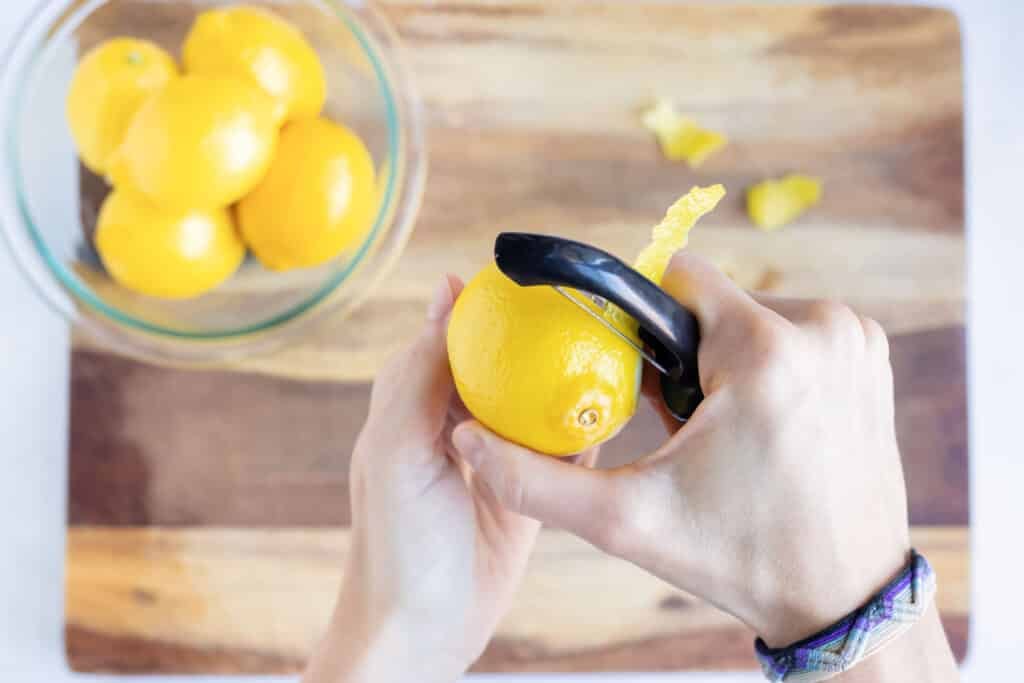
4. Vegetable Peeler
A vegetable peeler is another quick way to zest a lemon if you don’t have a zester or microplane handy. It’s what you see the bartenders make when garnishing an Old Fashioned!
While this method is a little more technique sensitive, you will still be able to get a good bit of lemon zest if you’re in a pinch.
How To Zest Lemons with a Vegetable Peeler:
- Place the sharp edges of the vegetable peeler on one end of the citrus and push slightly into the fruit.
- Pull down to the other end, paying close attention not to cut into the fruit too deep. You do not want to remove as little of the white part as possible.
- Repeat this process until the entire peel is removed and only the pith remains.
- Finely chop the lemon peel to make lemon zest.
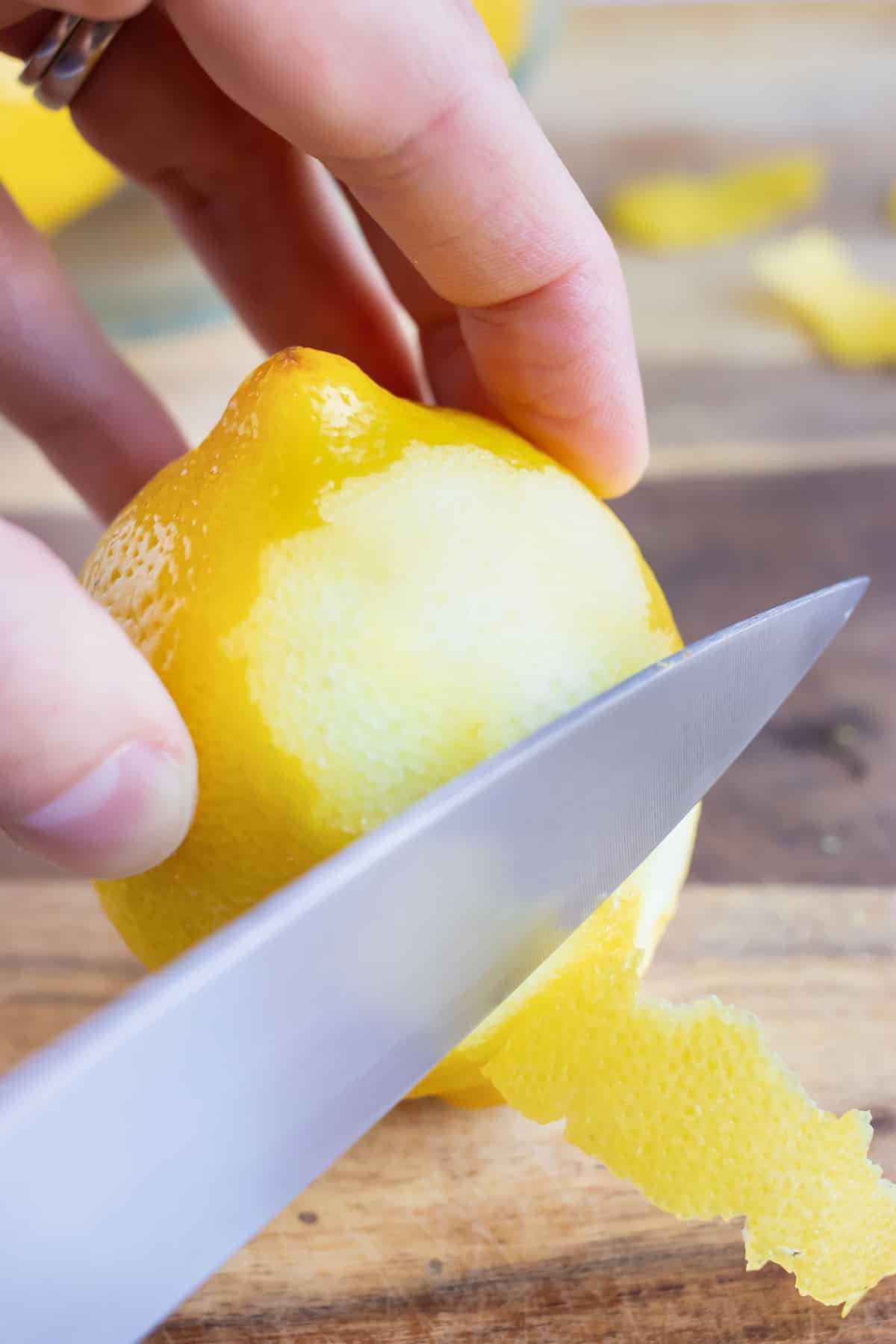
5. Knife
Much like the vegetable peeler method, using a sharp knife is a bit more technique sensitive.
But the best part? Everyone has a knife on hand!
It’s easiest to use a paring knife when peeling citrus. However, you can always use a very sharp chef’s knife if that is all you have on hand.
How to Zest Lemons with a Knife:
- Cut off one end of the lemon using a paring knife and then place the lemon cut-end down on a cutting board.
- Or you can skip this step and just hold the lemon steady on a cutting board. (Pictured above.)
- Carefully cut into the fruit at an angle and remove the bright, yellow peel, avoiding the white pith.
- Remove any white pith that remains.
- (Optional) If you would like to have smaller pieces of peel, finely chop until your desired size is reached.
After you’ve picked one of these methods, don’t forget to use that fresh lemon juice!
FAQs
It’s best to use lemon zest immediately after grating or zesting for the most flavor. If you must store it for later, freezing citrus zest is the best option.
Fresh citrus zest can be stored in a small airtight container for up to 6 months in the freezer. Do not pre-zest citrus and store in the refrigerator as it loses it’s natural oils, and thus it’s pungency, rather quickly. It will also dry out the longer it is exposed to oxygen.
A medium-sized lemon will yield roughly 1 tablespoon of zest.
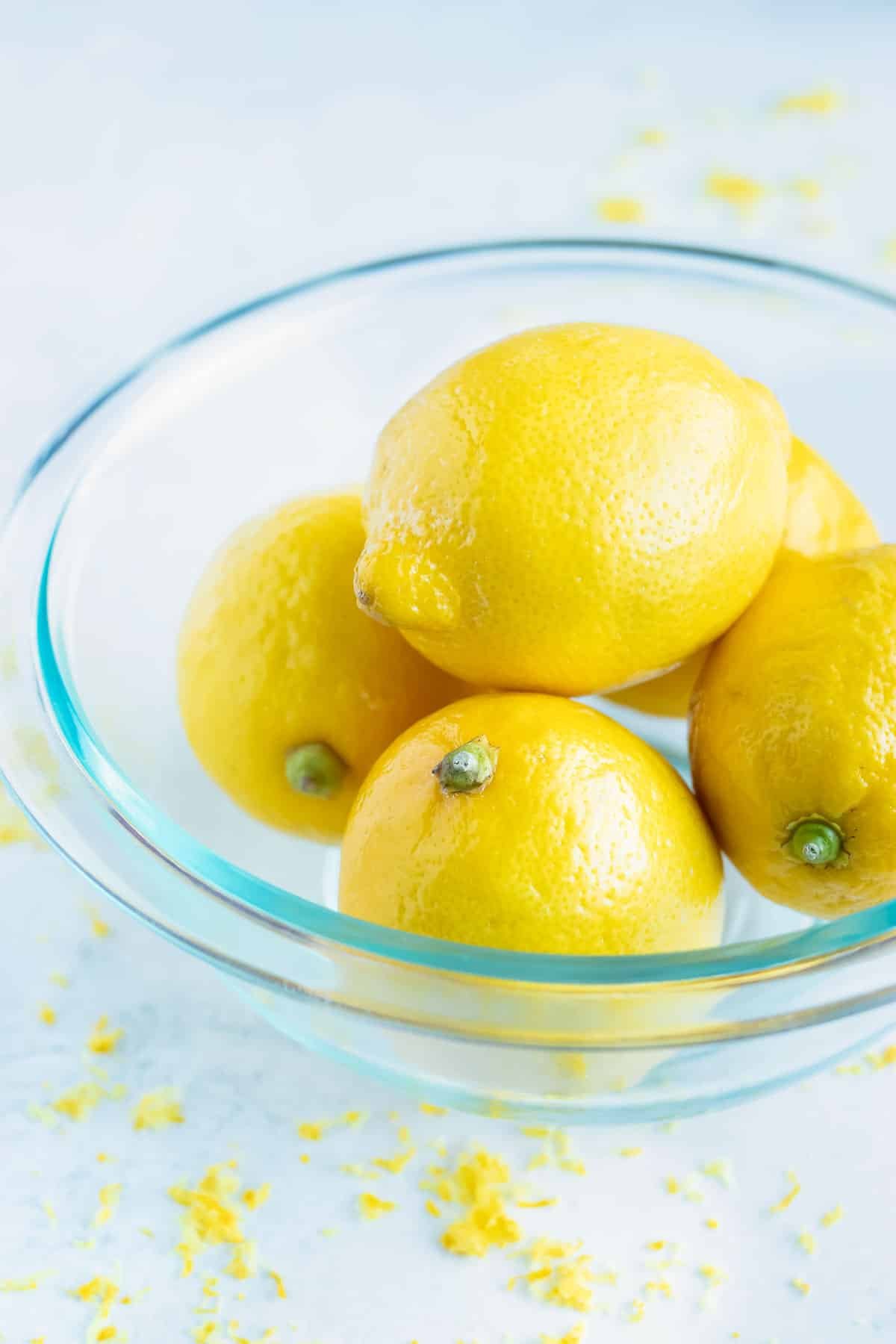
The Best Lemons to Zest
Most non-organic lemons contain a wax coating on the exterior of the fruit to preserve it and keep it looking fresh. While the wax coating is technically safe to eat, you may still opt to de-wax them before zesting.
How to de-wax lemons:
- Bring a large pot of water to a boil and pour hot water over lemons in a colander.
- Immediately scrub lemons with a vegetable brush to remove the wax coating.
- Dry the lemons thoroughly before zesting.
Alternatively, you can buy organic citrus which are either not covered in wax at all or have an organic beeswax coating.
Recipes with Lemon Zest
Now that you’ve got your zesting skills down, you need to check out these lemon recipes next!
On the savory side, this Roasted Asparagus, Pasta Primavera, Roasted Yukon Gold Potatoes, Lemon Vinaigrette, and Lemon Dill Salmon are all incredible!
If you’re craving something sweet then these Lemon Poppy Seed Muffins, Lemon Zucchini Bread, and this Blueberry Lemon Chia Pudding.
What something to cool you down? Check out this Lemon Sorbet and Frozen Lemonade!
[mv_video doNotAutoplayNorOptimizePlacement=”false” doNotOptimizePlacement=”false” jsonLd=”true” key=”icsEMkct8″ ratio=”16:9″ thumbnail=”https://mediavine-res.cloudinary.com/v1670613030/hvvmk90hhfdnemuayvp6.jpg” title=”How to Zest a Lemon” volume=”70″]
Tap stars to rate!
How to Zest a Lemon (5 Ways!)
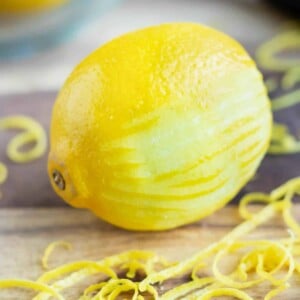
email this recipe!
Ingredients
- Lemons
Instructions
To Zest with a Microplane:
- Move the lemon back and forth over the grates of the microplane, rotating it as you go. Pay close attention to the placement of your fingers. (A microplane has very sharp edges and can easily cut you!) Continue zesting the lemon until the lemon peel has been removed.Lemons
To Zest with a Citrus Zester:
- Place the fine, sharp-edged holes on one end of the citrus, following the curvature of the fruit. Push slightly into the fruit and pull down to the other end. Repeat this process until the entire lemon peel is removed and only the pith remains.Lemons
To Zest with a Boxed Cheese Grater:
- Place the lemon on side of the cheese grater that has the smallest holes. Move it back and forth, paying close attention to the placement of your fingers. Continue zesting the lemon until the entire yellow part is removed.Lemons
Using a Vegetable Peeler:
- Place the sharp edges of the peeler on one end of the citrus and push slightly into the fruit. Pull down to the other end, paying close attention not to cut into the fruit too deep. You want to remove as little of the white part as possible. Repeat this process until the entire peel is removed and only the pith remains.Lemons
- Optional: If you would like to have smaller pieces of peel, finely chop until your desired size is reached.
To Zest with a Knife:
- Cut off one end of the lemon. Place the lemon cut-end down on a cutting board. Or you can skip this step and just hold the lemon steady on a cutting board.Lemons
- Carefully cut into the fruit at an angle and remove the bright, yellow peel, avoiding the white pith. Remove any white pith that remains.
- Optional: If you would like to have smaller pieces of peel, finely chop until your desired size is reached.
Tap stars to rate!
Video
Notes
- One medium-sized lemon will yield roughly 1 tablespoon of zest.
- Store extra lemon zest in an airtight container in the freezer for up to 6 months.
- Limes and oranges may be zested using this same process.
- If using waxed lemons:
- Bring a large pot of water to a boil and pour hot water over lemons in a colander.
- Immediately scrub lemons with a vegetable brush to remove the wax coating.
Nutrition
Nutrition information is automatically calculated, so should only be used as an approximation.

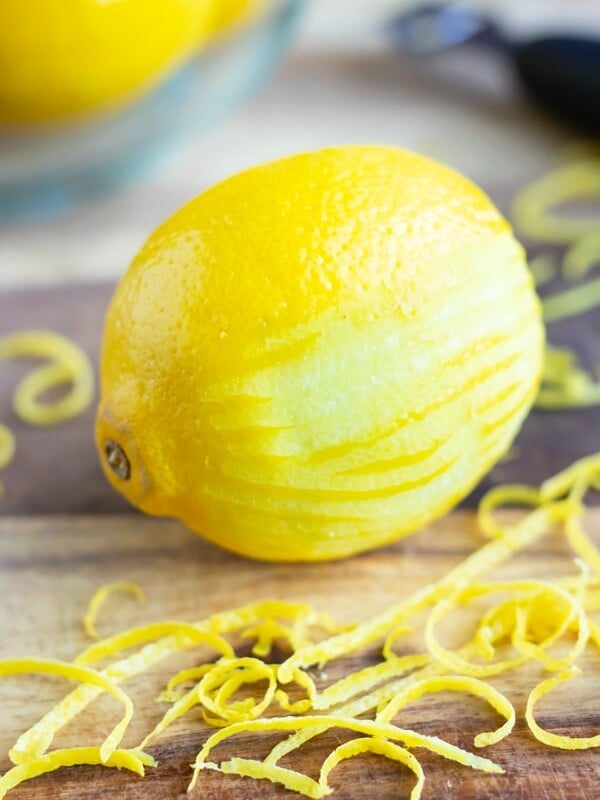


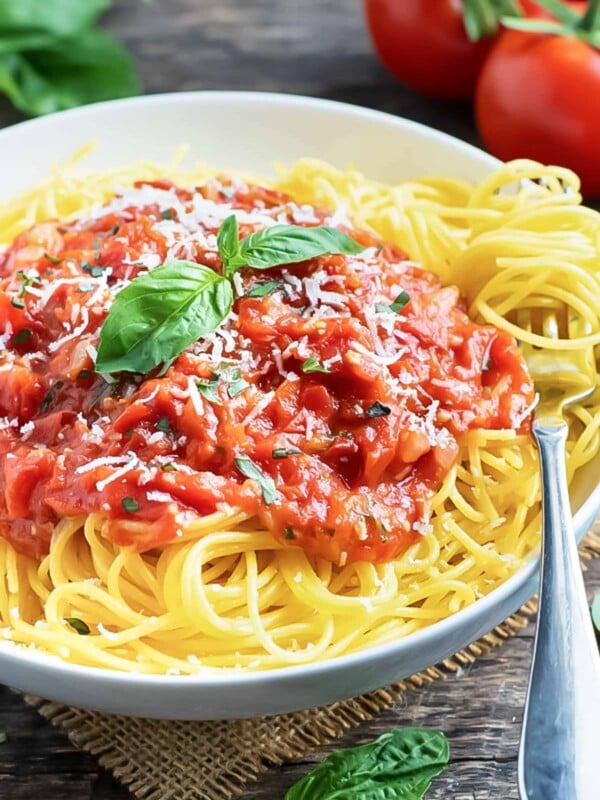
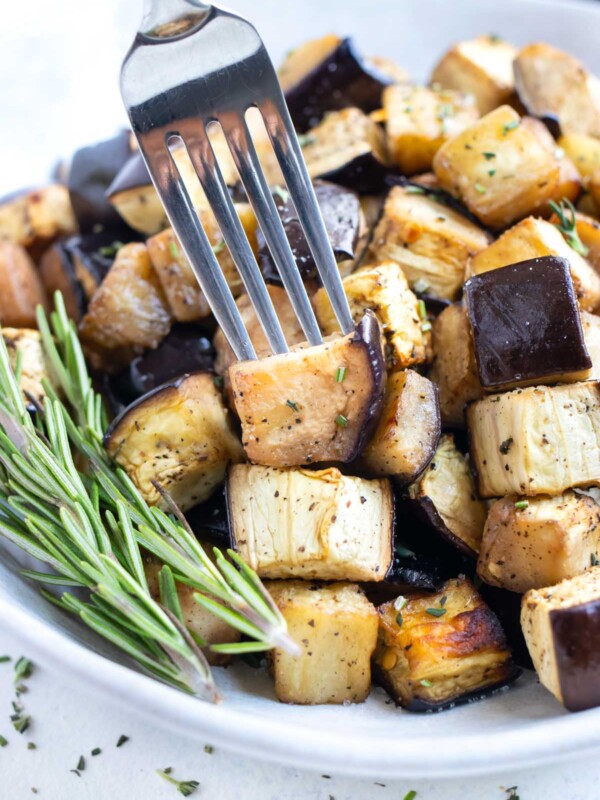
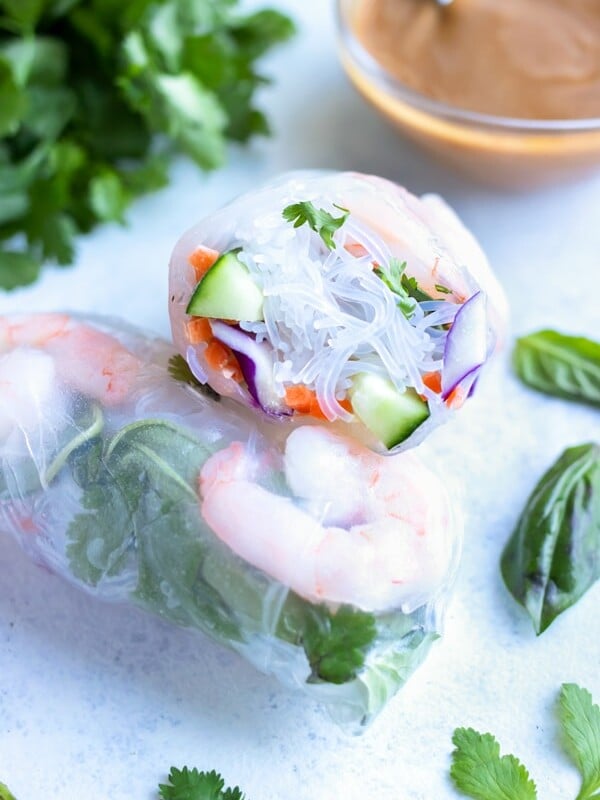
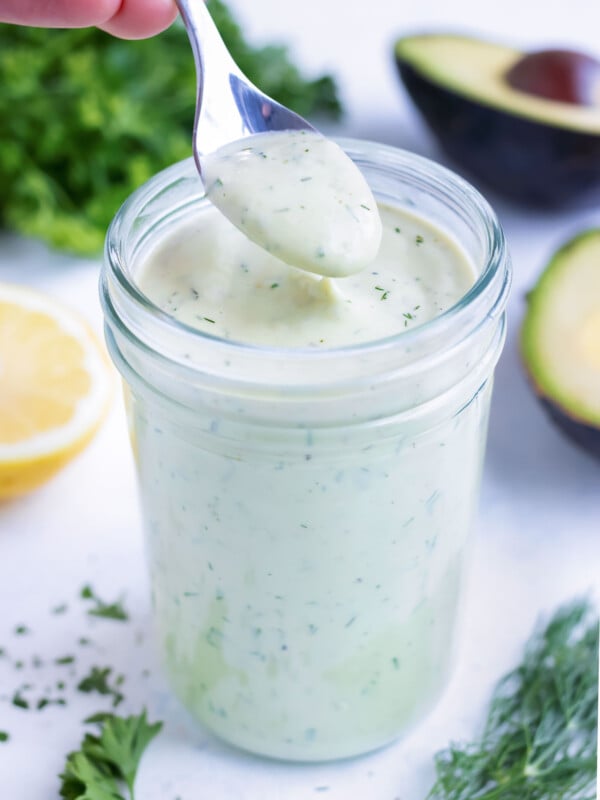
You can also use a steel mesh strainer for zesting!
Thanks for the tip.
This is very helpful.Very easy to understand directions.The pictures are perfect showing you the tool and how it looks to use.
So glad this was able to help you Debra! Thanks so much for taking the time to leave a comment!
THANK YOU FOR YOUR TIME, I APPRECIATE YOUR EDUCATION, FUN FACT’S AND THE WAY’S TAUGHT ABOUT BEING HAPPY AND HEALTHY, AFTER USING A GLUTEN FREE MEAL PLAN LIFE HAVE BECOME MORE AND MORE INCREDIBLE AND FULFILLED WITH HOPE, THANK YOU.
Yay! I’m so happy you find them helpful. Thanks for taking the time to leave a comment and rating 🙂
Thank you for this, so helpful!!
Just found your site as I’m going to make your Paleo Pumpkin Cookies, and this caught my eye. Knowing about the wax, the amount of zest per lemon, and the various ways to do so makes it so much less intimidating, as I don’t have the proper tools. The cheese grater will be perfect!
Thanks again!
Yay, Laura! So happy this post is helpful to you. And those cookies are ah-maaazing! Can’t wait to hear what you think. Thanks for your comment and rating 🙂